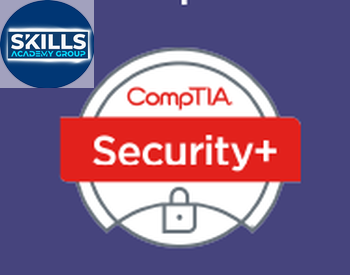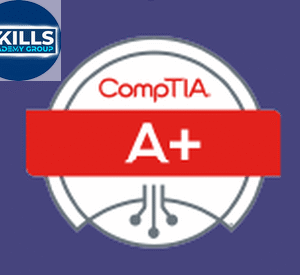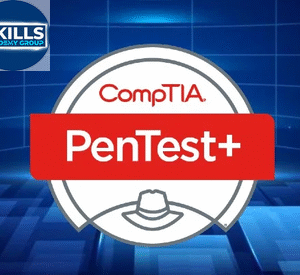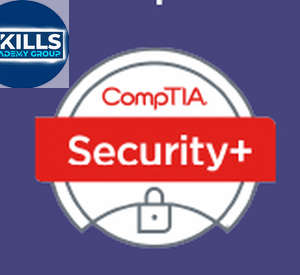The CompTIA Security+ (SY0-701) course covers the SY0-701 exam objectives and provides knowledge in areas such as covering in-demand skills related to current threats, automation, zero trust, IoT, risk, and more, this course represents the forefront of cybersecurity education. Learn and use the newest developments in cybersecurity technology, terminology, techniques, and tools.The CompTIA Security+ study guide will help you get a full understanding of the challenges you’ll face as a security professional.
Here’s what you will get
The CompTIA Security+ certification exam ensures that candidate has the knowledge and skills necessary to evaluate the security posture of an enterprise environment. This includes suggesting and implementing suitable security solutions, securing hybrid environments covering cloud, mobile, and IoT, and operating with an understanding of relevant laws and policies, incorporating governance, risk, and compliance principles.
Here’s what you will learn
Lesson 1: Introduction
- The Security+ Exam
- What Does This Course Cover?
- Exam SY0-701 Exam Objectives
- SY0-701 Certification Exam Objective Map
Lesson 2: Today’s Security Professional
- Cybersecurity Objectives
- Data Breach Risks
- Implementing Security Controls
- Data Protection
- Summary
- Exam Essentials
Lesson 3: Cybersecurity Threat Landscape
- Exploring Cybersecurity Threats
- Threat Data and Intelligence
- Summary
- Exam Essentials
Lesson 4: Malicious Code
- Malware
- Summary
- Exam Essentials
Lesson 5: Social Engineering and Password Attacks
- Social Engineering and Human Vectors
- Password Attacks
- Summary
- Exam Essentials
Lesson 6: Security Assessment and Testing
- Vulnerability Management
- Vulnerability Classification
- Penetration Testing
- Audits and Assessments
- Vulnerability Life Cycle
- Summary
- Exam Essentials
Lesson 7: Application Security
- Software Assurance Best Practices
- Designing and Coding for Security
- Software Security Testing
- Injection Vulnerabilities
- Exploiting Authentication Vulnerabilities
- Exploiting Authorization Vulnerabilities
- Exploiting Web Application Vulnerabilities
- Application Security Controls
- Secure Coding Practices
- Automation and Orchestration
- Summary
- Exam Essentials
Lesson 8: Cryptography and the PKI
- An Overview of Cryptography
- Goals of Cryptography
- Cryptographic Concepts
- Modern Cryptography
- Symmetric Cryptography
- Asymmetric Cryptography
- Hash Functions
- Digital Signatures
- Public Key Infrastructure
- Asymmetric Key Management
- Cryptographic Attacks
- Emerging Issues in Cryptography
- Summary
- Exam Essentials
Lesson 9: Identity and Access Management
- Identity
- Authentication and Authorization
- Authentication Methods
- Accounts
- Access Control Schemes
- Summary
- Exam Essentials
Lesson 10: Resilience and Physical Security
- Resilience and Recovery in Security Architectures
- Response and Recovery Controls
- Physical Security Controls
- Summary
- Exam Essentials
Lesson 11: Cloud and Virtualization Security
- Exploring the Cloud
- Virtualization
- Cloud Infrastructure Components
- Cloud Security Issues
- Hardening Cloud Infrastructure
- Summary
- Exam Essentials
Lesson 12: Endpoint Security
- Operating System Vulnerabilities
- Hardware Vulnerabilities
- Protecting Endpoints
- Hardening Techniques
- Operating System Hardening
- Securing Embedded and Specialized Systems
- Asset Management
- Summary
- Exam Essentials
Lesson 13: Network Security
- Designing Secure Networks
- Secure Protocols
- Network Attacks
- Summary
- Exam Essentials
Lesson 14: Wireless and Mobile Security
- Building Secure Wireless Networks
- Managing Secure Mobile Devices
- Summary
- Exam Essentials
Lesson 15: Monitoring and Incident Response
- Incident Response
- Incident Response Data and Tools
- Mitigation and Recovery
- Summary
- Exam Essentials
Lesson 16: Digital Forensics
- Digital Forensic Concepts
- Conducting Digital Forensics
- Reporting
- Digital Forensics and Intelligence
- Summary
- Exam Essentials
Lesson 17: Security Governance and Compliance
- Security Governance
- Understanding Policy Documents
- Change Management
- Personnel Management
- Third-Party Risk Management
- Complying with Laws and Regulations
- Adopting Standard Frameworks
- Security Awareness and Training
- Summary
- Exam Essentials
Lesson 18: Risk Management and Privacy
- Analyzing Risk
- Managing Risk
- Risk Tracking
- Disaster Recovery Planning
- Privacy
- Summary
- Exam Essentials
Hands-on LAB Activities
Malicious Code
- Examining Spyware
- Analyzing Malware Using VirusTotal
Social Engineering and Password Attacks
- Using Social Engineering Techniques to Plan an Attack
- Cracking a Linux Password Using John the Ripper
- Cracking Passwords
Security Assessment and Testing
- Scan for Vulnerabilities Using Nikto
- Conducting Vulnerability Scanning Using Nessus
- Consulting a Vulnerability Database
- Gathering Site Information
Application Security
- Fuzzing Using OWASP ZAP
- Performing SQL Injection in DVWA
- Exploiting LFI and RFI Vulnerabilities
- Conducting a Cross-Site Request Forgery Attack
- Performing an XSS Attack in DVWA
- Examining Application Vulnerabilities
- Exploiting an Overflow Vulnerability
- Exploiting a TOCTOU Vulnerability
Cryptography and the PKI
- Using Symmetric Encryption
- Creating Asymmetric Key Pairs
- Creating File Hashes
- Examining PKI Certificates
Identity and Access Management
- Installing a RADIUS Server
- Examining Kerberos Settings
- Enforcing Password Policies
- Using the chmod Command
- Creating Linux Users and Groups
Cloud and Virtualization Security
- Detecting Virtualization
Network Security
- Capturing Credentials On-path
- Launching a DoS Attack
Wireless and Mobile Security
- Securing a Wi-Fi Hotspot
Monitoring and Incident Response
- Examining MITRE ATT&CK
- Viewing Linux Event Logs
- Viewing Windows Event Logs
Digital Forensics
- Completing the Chain of Custody
- Using FTK Imager
- Analyzing Forensic Case with Autopsy
Please note an additional exam fee is required upon course completion. Contact us for further information






